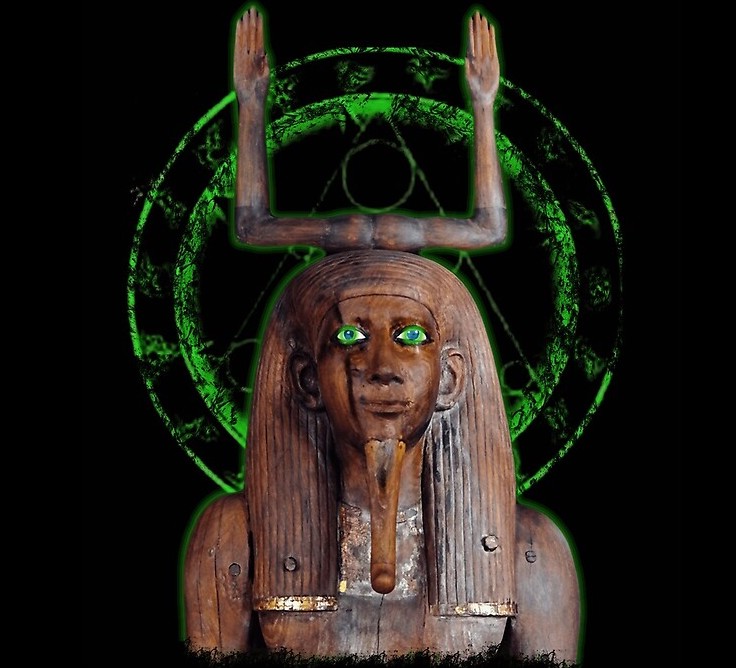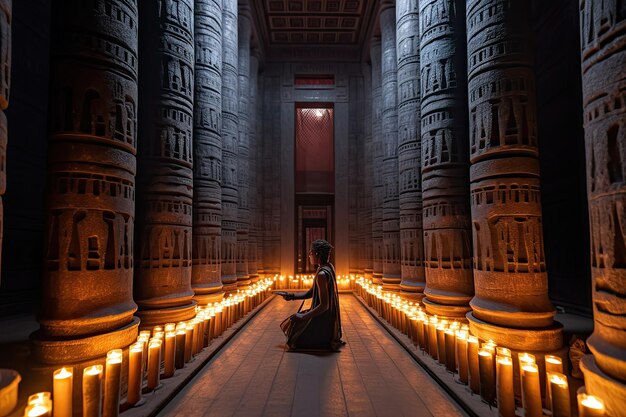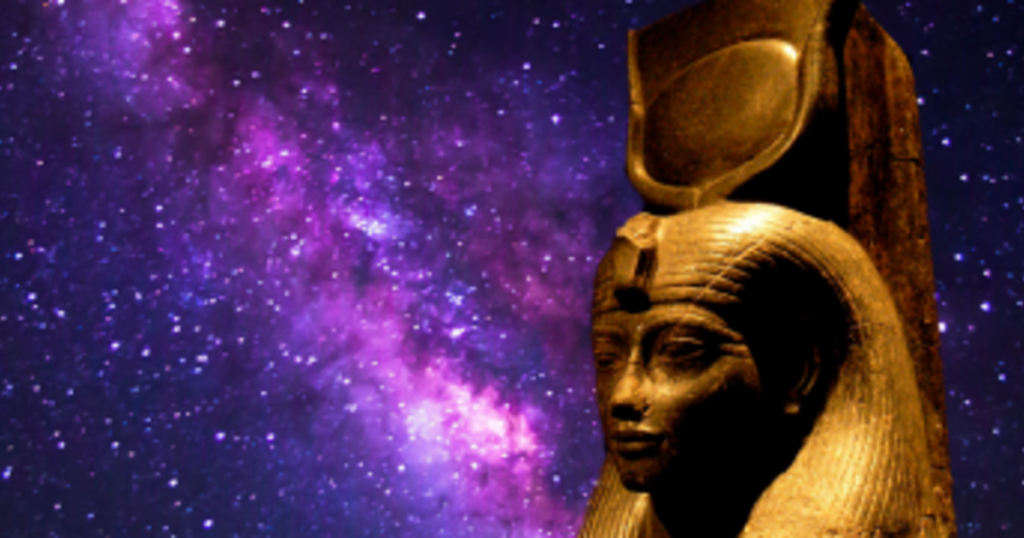The spring equinox approaches. Okay, I’m anticipating…just a tad. But winter is ending. And we continue both our work in the world and our Great Work within.
Today I’d like to share a meditation from Isis Magic, slightly modified, which I hope may offer some hope and strength. You may, as I do, find it a little challenging right now—because it opens up space for gratitude, yes, even in this terrible time.
Where to do the meditation is up to you. In front of your altar is always good or, if the weather is clement enough, outside might be even better—for we can sometimes sense Isis’ heartbeat more easily in nature.
We start with the Wings and Breath of Isis. We invoke and connect with Her as we sense Isis’ mighty heart. With our own hearts opening, opening to Her, we give voice to things for which we are grateful—anything from the warm scent of cat fur to the beauty of the day to the love of our friends and activities of our communities. And try to actually speak these gratitudes out loud if you can. The power of heka, magic, is in the word—and this is intensified when spoken.
I hope you will join me in this meditation as we begin to welcome the light of coming spring.
The Wings & Breath of Isis
Stand, with your arms at your sides, facing east. Inhale while simultaneously bringing your hands together at the level of your abdomen and cradling one palm in the other. With this breath, be aware that you are gathering strength. Exhale while simultaneously raising and spreading out your arms like wings unfurling. The arms should be slightly curved, with the palms facing out and slightly above the shoulders. With this exhalation, be aware that you are expending your personal energy to reach out to Isis. Breathe in and say:
“I am a Child of Isis. I am a Beloved of the Goddess.” (Repeat this as many times as you need in order to feel that it is so.)
Now turn your palms inward, forming a cup with your arms. Inhale and imagine you are drawing in the breath of Isis and it fills the cup of your arms. Exhale and open out your arms, allowing them to slowly arc down to your sides. As you exhale, imagine sharing the blessings of Isis with all the earth. To complete the sign, return to the first position.
Greeting the Goddess
Be seated comfortably, breathe, and begin chanting Her name. You may use any of Her epithets you like. (Maybe even try some from last week’s post?) Or simply chant Her name as Isis or Iset or Ise. When you sense Her presence, stop. Breathe deeply and slowly. Know that you are breathing the breath of Isis the Goddess. Try to match your breath to Her breath.
Heart Joined to Heart
Now, begin to sense Isis’ heartbeat. It is within Her and it is all around you. Listen to Her beating heart. Her heartbeat is in all things. In the breath of the sky. In the song of birds. In the wind moving through grass and trees. In the flowing of the waters. In the thrumming of the great, deep Earth.
Listen and find the rhythm of the heartbeat of Isis, the Great Goddess. Become very aware of that rhythm.
Now, become aware of your own heart—awakened and alive and open to Her within your body. Place your finger on your pulse if need be to feel the heartbeat of your own life.
Now see if you can attune your human heart to the rhythm of Her Divine and Living Heart. Let it slow or speed to meet Hers. Attune your heart to Hers until you sense the two hearts beat in harmony.
Read the following aloud, speaking these Words of Power, and taking time to confirm the truth of these potent words in your heart:
“My Mother. My heart. My Mother. My heart.
“I am aware in my heart. I am in power in my heart. I am aware and in power in my heart, which is the heart given to me by my human mother—and by my Great Mother Isis.
“My Mother. My heart. My Mother. My heart.

“I am intelligent in my heart. I am compassionate in my heart. I am intelligent and compassionate in my heart, which is the heart which drums in rhythm with the heart of Isis, the Radiant One.
“My Mother. My heart. My Mother. My heart.
“I am alive in my heart. I am full in my heart. I am alive and full in my heart, the center of all Being, the beginning of all Becoming. I am alive and full in my heart, and my heart knows all the joys of my life.
“In the fullness of my Being, I am Becoming joy-full. The Star of Isis arises—all will be well. Isis comes—peace returns to me. I am sitting in the Throne of Abundance bathed in Her Light. Once again, I attune my human heart to Her Divine heart.”
Thanksgiving
Close your eyes and open your heart. Know you are protected by the wings and centered in the heart of Isis. Then name aloud some things you are grateful for. Don’t stress if nothing comes to mind right away. Just wait patiently. When you’re ready to name them, say:
“I am grateful for (naming as many things as you can).”
When you have completed your thanksgiving, say:
“My Mother. My heart. My Mother. My heart. I am aware in my heart and I am grateful in my heart. You have blessed me, Isis, and I am thankful, Great Goddess, in return. Amma, Iset. Grant that it ever be so.”
Complete the meditation by rising and working the Wings and Breath of Isis one more time.




















